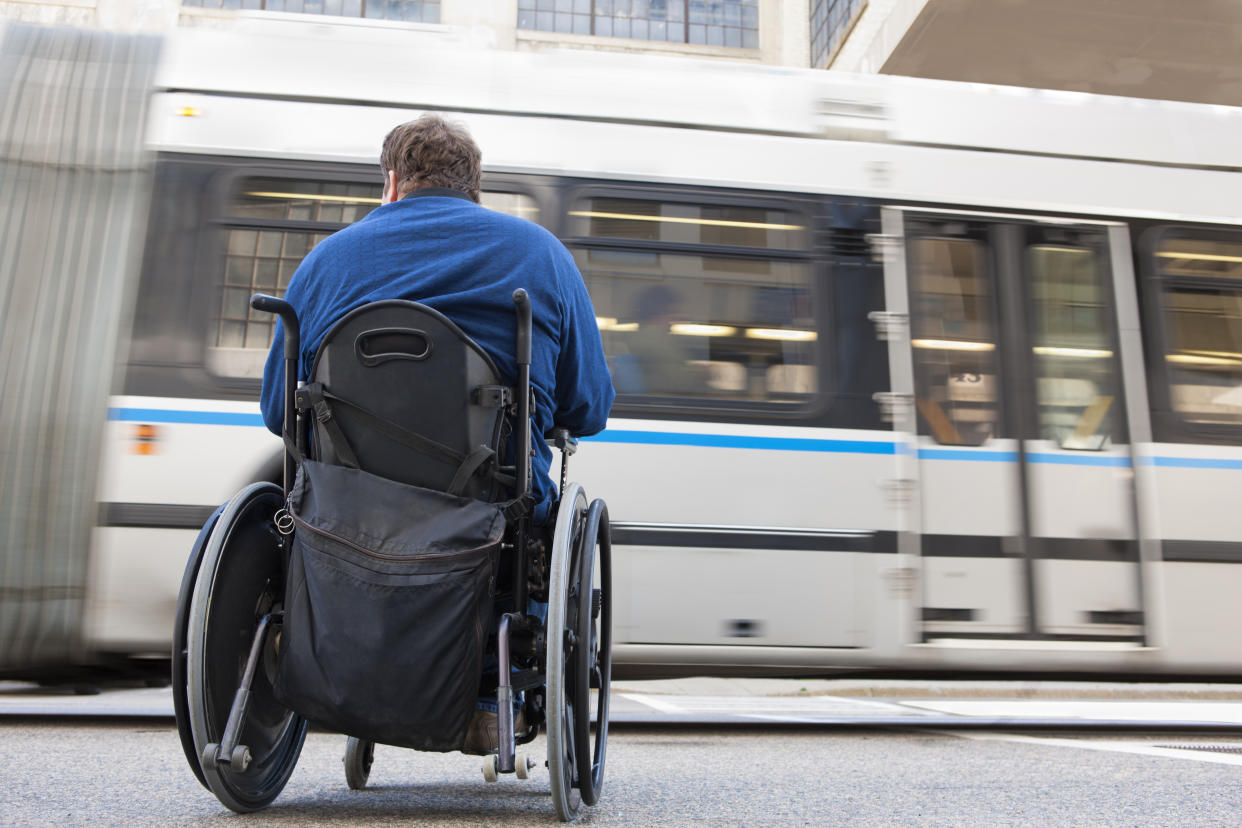The coronavirus and people with disabilities: WHO highlights this high-risk group

Groups at high risk for the coronavirus have been a top priority of the World Health Organization (WHO) and the Centers for Disease Control and Prevention (CDC), as protocol calls to maintain focus on keeping populations such as the elderly, those with underlying medical conditions, and pregnant women safe. One group, however, that has seldom been addressed during the outbreak is that of disabled people, which the WHO is now bringing to light.
The organization at the forefront of the pandemic response discussed the risk faced by those with disabilities during a livestream on TikTok — where it aims to provide accurate information, resources and support for the community — on Thursday. Lindsay Lee, a disability expert at WHO, led the conversation and provided reasons — from lack of information to reliance on people and products for assistance — as to why those living with disabilities may be at greater risk of contracting the illness of COVID-19.
According to a guidance document — which will soon be available on WHO’s site and which was provided to Yahoo Lifestyle by Lee — the direct limits on the safety and health of people living with disabilities include barriers to implementing basic hygiene measures, difficulty in enacting social distancing and the need to touch things to obtain information from the environment or for physical support. Other considerations with serious implications also include access to both healthcare and public health information.
The National Council on Disability (NCD) tells Yahoo Lifestyle that the last is of utmost importance. “People with disabilities need equal access to critical COVID-19 updates and official communications,” says Neil Romano, Chairman of the National Council on Disability, “which means sign language interpreters, captioning, and plain language, and federal law requires it.”
A March 18 letter from the NCD addressed to Stephanie Grisham, White House Director of Communications, brought attention to the need of Taskforce interpreters at public briefings for the millions of people in the United States who are deaf or hard of hearing. The NCD didn’t immediately confirm if the White House provided a response.
In the meantime, WHO took to TikTok to inform people of the proper measures to take now if directly or indirectly impacted by disability, including making sure that a person’s assistive products are properly disinfected. “These include wheelchairs, walking canes, walkers, transfer boards, white canes, or any other product that is frequently handled and used in public spaces,” the WHO document reads.
However, basic protection measures become even more important for a disabled person, and those around them, if they require care and cannot navigate the healthcare system themselves. In that case, WHO recommends that everyone in a disabled person’s household, including trusted friends and family, is aware of any important and relevant information that might be needed if that person becomes ill.
Precautions must also be put in place in case a caregiver becomes sick. “Consider increasing the pool of those you can call upon, in preparation of one or more becoming unwell or needing to self-isolate,” the WHO document states. “If you organize caregivers through an agency, find out what contingency measures they have in place to compensate for a potential workforce shortage.”
Shannon McCracken, vice president of government relations for ANCOR, the leading nonprofit trade association representing providers of services to people with disabilities, explains to Yahoo Lifestyle that some precautions are specific to certain groups, which ultimately impacts how vulnerable each individual really is to the illness. However, all people with disabilities are united through the greater efforts that must be made to maintain their health.
“The more than five million people in our country with intellectual and developmental disabilities are defined by their diversity, and as a result, some are much more prone to the devastating impacts of COVID-19 than others,” she says. “One thing that unites this entire population is the need for access to high-quality supports to help them navigate the medical system, understand the precautions to take to keep healthy and safe, identify opportunities for support when day programs and places of employment are closed, and so much more.”
Related: For Disabled Residents, Delivery Is Essential and Harder to Come By
For the latest news on the evolving coronavirus outbreak, follow along here. According to experts, people over 60 and those who are immunocompromised continue to be the most at risk. If you have questions, please reference the CDC and WHO’s resource guides.
Read more from Yahoo Lifestyle
Coronavirus 'infodemic' prompts WHO to join forces with YouTube, TikTok to combat misinformation
Coronavirus and immunocompromised kids: 'Where does this leave children like mine?'
Want daily pop culture news delivered to your inbox? Sign up here for Yahoo Entertainment & Lifestyle's newsletter.



